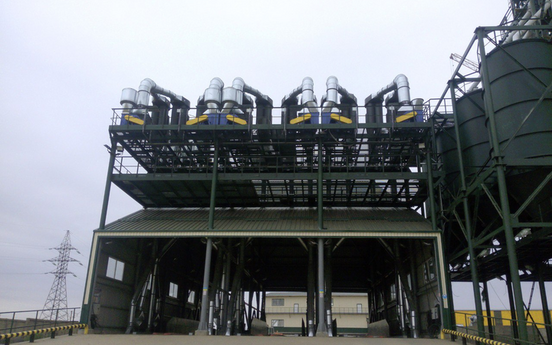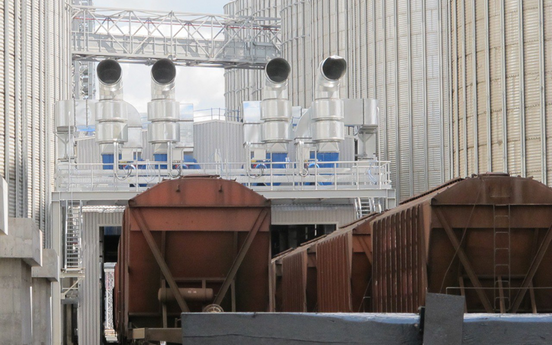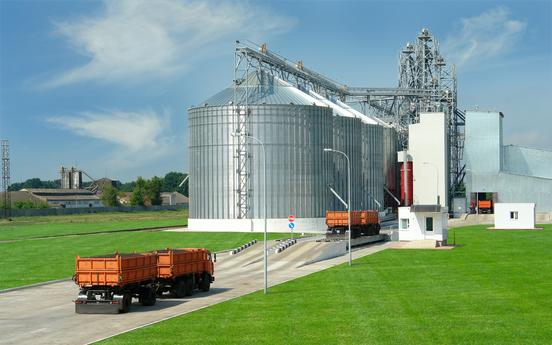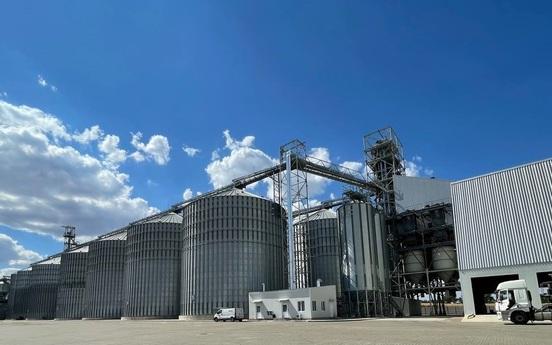Use of belt conveyors in elevator complexes

Belt conveyor design
Belt conveyors are one of the most efficient mechanisms for continuous movement of goods in industrial, construction, and warehouse conditions. In grain storage complexes, belt conveyors are used to transport grain between reception, cleaning, drying, and storage points.
Belt conveyor: structure and basic components:
- Frame;
- Drive and driven drums;
- Belt;
- Tensioning mechanism;
- Gear motor;
- Upper and lower roller supports.
All elements work as a single system, ensuring that products are moved smoothly and in a controlled manner. Let's take a look at some of the most popular models of belt conveyors in agribusiness and their characteristics.
- The ZEO-BC open belt conveyor is a continuous conveyor designed for transporting grain and bulk materials in a horizontal, inclined, or combined position (from -10° to +22°). The main part of the mechanism is a belt that moves between the drive and tension stations, supported by a system of rollers. This design ensures stable operation without overloads.
- The ZEO-BCE closed belt conveyor is a closed belt conveyor for transporting bulk materials within a range of -10° to +22°. Its design takes into account the dustiness of the production environment: the support rollers have a special design with bearings located outside the dust zones, which significantly extends their service life.
- The ZEO-BC-RM mobile belt conveyor is another version of the belt conveyor. It is mobile and designed for use in warehouses, elevators, and transshipment points. It is equipped with swivel wheels that allow the unit to be moved freely around the enterprise and set up in different areas.
The length and width of the conveyor are selected individually depending on the type of cargo, productivity, and size of the premises. By connecting several belt conveyors into a single complex, and provided that the power and tensioning mechanism are correctly selected, it is possible to organize transportation over a distance of up to 60 meters without loss of efficiency.
How a belt conveyor works
All belt conveyors operate according to the same principle: the load moves together with the belt, continuously, with minimal energy consumption. The basis of its operation is a conveyor belt, closed in a circle, which moves with the help of a drive drum. The speed and direction of movement are controlled by a gear motor, and the load is moved along the upper branch of the belt. This mechanism is effectively used in industries where precision and rhythm are important.

Advantages of using belt conveyors
- Continuous flow of cargo without stops.
- Suitable for bulk materials. Can operate at various angles of inclination, in enclosed or open spaces.
- Simple mechanics and minimal resistance to movement, resulting in low power consumption.
- Additional operations can be performed on the belt as required: marking, packaging, sorting, etc.
- Belt conveyors have a long service life and require minimal intervention.
- The length, direction of movement, and width of the belt can be easily changed, or several conveyors can be combined into one system.
- Automation of transport equipment significantly reduces the need for manual labor and increases productivity
Disadvantages of using belt conveyors
- Not suitable for transporting excessively hot materials without special protection.
- A smooth trajectory is required.
- The belt wears out during prolonged intensive use, especially when working with abrasive materials.
- Loads exceeding the permissible limits may cause the belt to slip or the mechanism to stop.
- In the event of a power failure, transport stops completely.
What to look for when choosing
- Grain Capital recommends taking into account the physical characteristics of the cargo, including size, weight, bulk density, and temperature, as these determine the optimal belt type, frame design, and permissible load on the conveyor.
- For inclined sections, belts with sidewalls or stiffeners may be required.
- Consider the operating conditions, as temperature, humidity, dust, and aggressive environments will influence your choice.
- Estimate the volume of material to be transported per hour. This will influence the belt width, speed, and drive power.
- If the products need to be sorted or weighed during transport, provide appropriate areas or integration with other modules.
- Mobile conveyors are convenient for temporary work or small businesses, while stationary conveyors are suitable for permanent production lines.
Conclusion
What is a conveyor? It is an indispensable element of elevator infrastructure. All belt conveyors operate on a similar principle: they ensure continuous and gentle movement of grain between all stages of processing. Their design allows the equipment to be flexibly adapted to the layout of the facility, the type of grain crops, and the flow rates. Low energy consumption, ease of maintenance, and the ability to integrate with automated control systems make belt conveyors the optimal choice for modern elevators. The correct selection of equipment parameters, taking into account the flowability, moisture content, and structure of the grain, guarantees reliable operation and minimizes losses throughout the entire logistics cycle.















